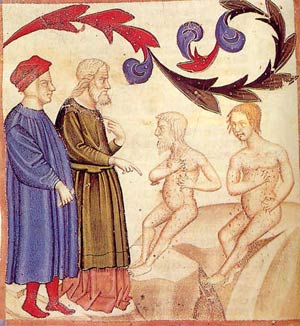Abu-Al-Qasim Khalaf Ibn'Abbas Al-Zahrawi was known in the Western World as Abulcasis, Bucasis or Alzahravius. At that period, and indeed throughout most historical times, surgery was considered inferior to medicine, and surgeons were considered in low regard. Albucasis did much to raise the status of surgery in Córdoba, an important centre of commerce and culture with a hospital and medical school equal to those of Cairo and Baghdad. A careful and conservative practitioner, he wrote the first illustrated surgical text, which held wide influence in Europe for centuries.

He is the famous surgeon of the Arabs. In 930 he was born in Al-Zahra, a suburb of Córdoba. He attended the University of Córdoba, which had been established for one and a half centuries. At that time Córdoba had a population of one million. It was the magnificent capital of Al- Andalus where culture and science were at their peak in Europe. In military power the Moslems also reached their zenith, not only in Spain but also throughout Europe after King Abdel-Rahman III defeated the Spanish kings of Navarre, Castile, and Leon at the north in 997. He died at the age of 83.
He wrote mainly four books. One of them is "Al-Tastif Liman Ajiz'an Al-Ta'lif' which is the best medieval surgical encyclopaedia. It was used in Europe until the 17th century. He signalled the importance of basic sciences: "... Before practicing, one should be familiar with the science of anatomy and the functions of organs so that he will understand them, recognize their shape, understand their connections, and know their borders. Also he should know the bones, nerves, and muscles, their numbers, their origin and insertions, the arteries and the veins, their start and end. These anatomical and physiological bases are important. If one does not comprehend the anatomy and physiology, he may commit a mistake that can kill the patient."
Al-Zahrawi used cautery to control bleeding. He used wax and alcohol to stop bleeding from the skull during cranial surgery. Al-Zahrawi also described the tracheotomy operation and performed it as an emergency on one of his servants. He was the first to write on orthodontia. He showed evidence of great experience from details of clinical picture and surgical procedures like his description of varicose veins stripping, even after ten centuries, is almost like modern surgery.
He described a total of 200 surgical and dental instruments most of them were original. During the time of Al-Zahrawi, surgery in the Islamic world became a respected specialty practiced by reputable physicians.
sumber dari: http://www.xtec.cat/~mherna23/deatdream23/abulcasis.htm
No comments:
Post a Comment